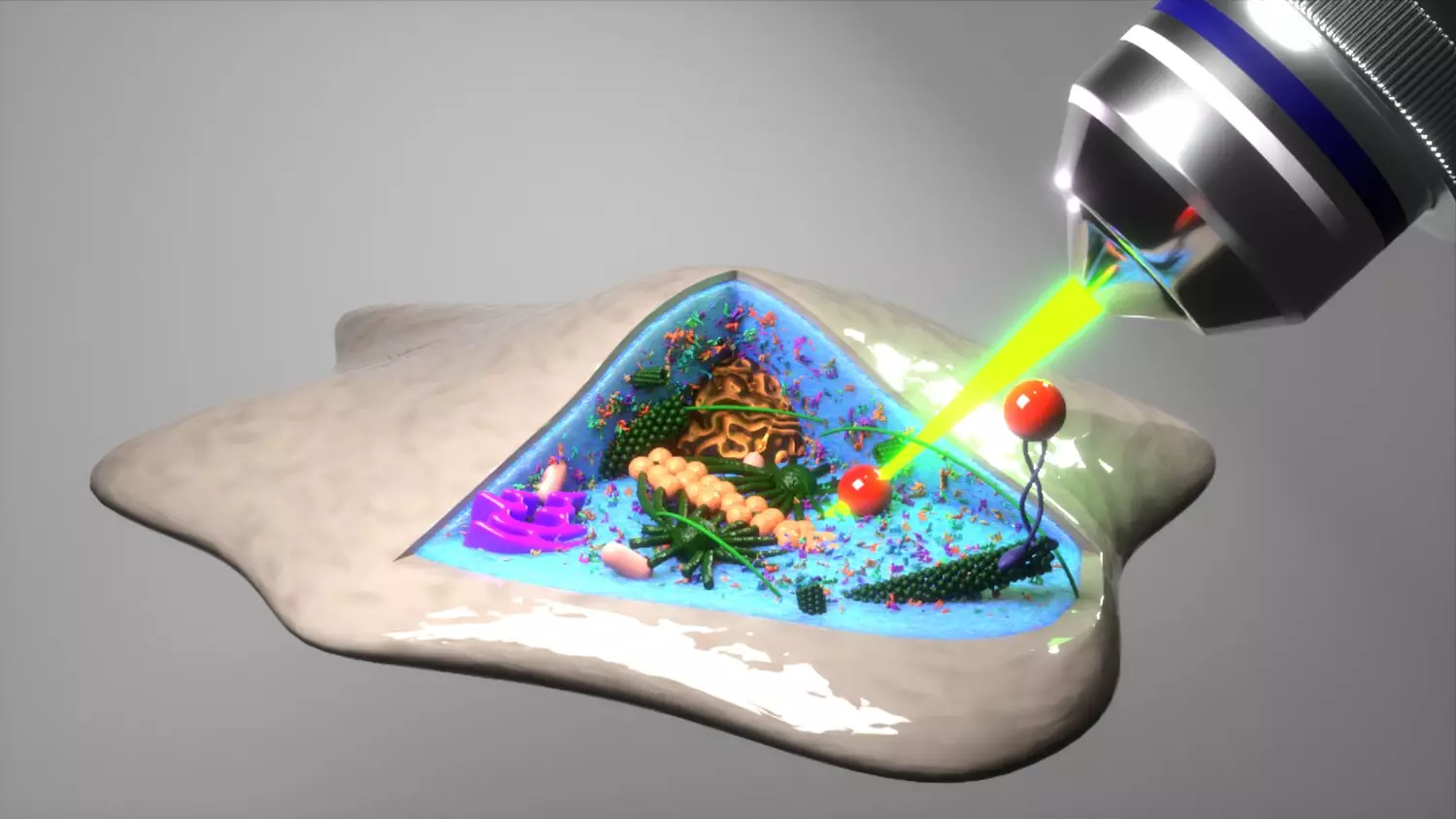Cells are often referred to as the building blocks of life; yet, their intricate workings remain enshrouded in mystery. The traditional approach to studying the mechanical properties of these microscopic entities has faced fundamental barriers for decades. The ability to distinguish between hard and soft cells, much like determining the ripeness of an avocado, relies on understanding underlying cellular dynamics. Despite over a century of research, the complex behaviors of plant cells and all cells on Earth continue to elude definitive understanding. Now, a team from the University of Göttingen is poised to change that narrative with an innovative methodology that reveals cellular reality through a nuanced lens.
Breakthrough Techniques in Cell Analysis
At the heart of this profound revelation is a groundbreaking technique that capitalizes on the inherent random motions of microscopic particles. This random movement, often seen as mere jittering, embodies a wealth of information about cellular mechanics. Researchers at Göttingen have pioneered an exhaustive simulation of these expected fluctuations, laying the groundwork for experimental verification using sophisticated optical laser traps. This ingenious dual-focused strategy permits the meticulous tracking of particle movements at a resolution of mere nanometers and a temporal precision of 50 microseconds.
The synergy between simulation and precise control not only enriches the quality of data collected but raises the bar for existing analytical methods that often compromise cell integrity during experimentation. Thus, the Göttingen researchers have crafted a major advancement in the field—one that prioritizes the integrity of living cells while expanding horizons for mechanical characterization.
The Mean Back Relaxation: A New Variable
Delving deeper into particle behavior, the researchers identified a fascinating phenomenon where particles tend to ‘remember’ their previous positions after moving about. This inclination led to the establishment of a novel variable known as mean back relaxation (MBR). MBR can be envisaged as a fingerprint for cellular environments, encapsulating various influences that dictate particle dynamics. This new measure holds the potential to discern active cellular processes from those driven solely by the fluctuations of temperature, known as Brownian motion.
Professor Matthias Krüger from the Institute of Theoretical Physics emphasizes this breakthrough, asserting that MBR ushers in a wealth of insights that transcend conventional methods. Such a robust analytical framework allows researchers to sift through the noise of cellular activity to uncover the underlying mechanical properties of diverse cell types.
Application to Living Cells
The in-depth analysis didn’t stop at theoretical implications. The research team rigorously applied their newfound methodology to living cells—an endeavor initially fraught with uncertainty about its effectiveness in more complex cellular environments. Professor Timo Betz remarked on the pleasant surprise that followed the results; despite the cells residing in an ecosystem of myriad interactions and responses, the method offered a remarkable clarity akin to that achieved in simpler experimental setups.
This application of MBR showcases its versatility and power, pushing boundaries of what was previously deemed feasible in cellular mechanics research. The implications of these findings will reverberate across biology and medicine, promising to enhance our understanding of various biological phenomena from cell differentiation to disease progression.
Impacts on Future Research
By unraveling the intricate mechanical properties of cells, the Göttingen research could revolutionize pathways for developing therapies and interventions. The ability to distinguish between soft, hard, or liquid environments within living cells is invaluable for biomedical applications. As we venture further into the microscope’s realm, understanding the behavior and mechanics of cells could illuminate not just fundamental biological processes but also inform treatment strategies for a myriad of illnesses.
The innovation demonstrated by this research doesn’t merely reflect a methodological leap; it embodies a philosophy shift in how cellular analysis is approached. By opting for non-invasive techniques that respect the cellular structure, scientists are paving the way for future exploration and discoveries yet to emerge from the vast biological treasures that cells maintain. The profound and versatile implications of recognizing the subtle interplay of forces within cells could ultimately guide us to a new epoch in medical sciences and biological research.


Leave a Reply